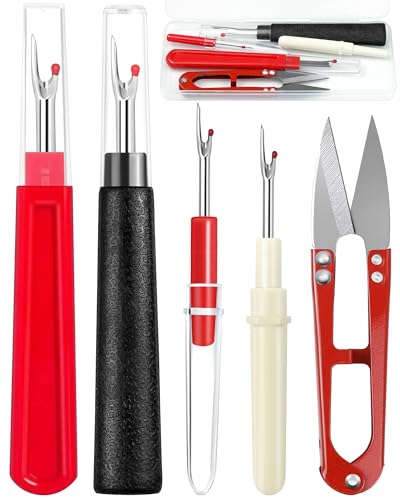Ever found yourself in a pinch, needing a quick trim but only have sewing scissors at hand? It’s a common dilemma, especially when you’re trying to save a trip to the salon. You might wonder if those trusty sewing scissors can double as hair-cutting tools.
Before you snip away, it’s important to consider a few key differences between sewing scissors and hair shears. While they might look similar, they’re designed for very different tasks. Let’s dive into why using the right tool for the job can make all the difference in your DIY haircut adventure.
Understanding Different Types of Scissors
In sewing and hair-cutting, many types of scissors serve specific purposes. Recognizing their differences ensures you use the right tool for each task.
Sewing Scissors vs. Hair Cutting Scissors
Sewing scissors, designed for cutting fabric, have blades optimized to handle textile fibers. They’re often heavier and sharper throughout the length of the blade. Examples include dressmaker’s shears, embroidery scissors, and pinking shears. Each serves a unique function, like cutting straight lines in fabric, trimming threads, and creating zigzag fabric edges respectively.
Hair cutting scissors, or hair shears, feature blades precision-engineered for cutting hair. They’re usually lighter with finely honed edges ensuring clean, precise cuts, minimizing split ends. Salon-quality shears, thinning shears, and texturizing shears cater to specific cutting techniques, such as layering or thinning hair.
The Importance of Scissor Blade Sharpness
Sharp scissors cut cleanly, reducing damage to fabric and hair. Sewing scissors maintain their sharpness over extended periods of cutting fabric but may dull faster if used on hair. Conversely, hair shears require frequent sharpening to maintain their edge due to the delicate nature of hair.
Regular maintenance of scissor blades ensures optimal performance, whether trimming fabric or hair. Use a professional sharpening service for best results, supporting consistent, high-quality cuts in all your projects.
Considerations Before Using Sewing Scissors on Hair
While using sewing scissors for a quick trim might seem convenient, it’s important to consider several factors to avoid potential drawbacks.
Evaluating Blade Material and Length
Sewing scissors are typically made from stainless steel, known for its durability and sharpness—features essential for cutting fabric efficiently. Hair cutting scissors, conversely, often use a softer steel that can be honed to a finer edge. The material difference means sewing scissors may not provide the precision needed for haircuts.
Blade length is another critical factor. Sewing scissors usually have longer blades designed for making straight cuts through fabric (e.g., cotton, polyester). Hair shears are shorter, offering better control when creating detailed or layered hairstyles. Using long sewing scissors can make it difficult to achieve the desired haircut.
Potential Damage to Hair Texture
Using sewing scissors on hair can result in a rougher cut, which can damage hair texture. Hair requires a clean cut to prevent split ends. Sewing scissors, designed for textile fibers, may crush or bend hair strands instead of slicing through them cleanly. This can lead to frizz and a less polished look.
Hair shears are crafted to ensure smooth, precise cuts, minimizing damage and maintaining hair health. Using the right tool ensures your hair remains in good condition, making it essential to invest in proper hair cutting scissors for the best results.
Alternatives to Using Sewing Scissors for Hair Cutting
Choosing the right tool is vital when cutting hair. While sewing scissors serve specific craft functions, dedicated hair-cutting tools offer better results. Here, explore top hair scissors brands and gain useful DIY hair-cutting tips.
Recommended Hair Scissors Brands
Selecting a reputable brand helps ensure precision and durability. Here are some noteworthy brands:

- Jaguar – Known for high-quality steel and ergonomic designs, Jaguar scissors offer smooth cuts and minimal strain on your hand.
- Washi – Offers a range of scissors featuring sharp edges and comfortable grips, ideal for both beginners and professionals.
- Kamisori – Renowned for its craftsmanship, Kamisori scissors provide balanced, lightweight shears for detailed work.
- Joewell – This brand is favored for its innovative blade technology, ensuring long-lasting sharpness and precision.
- Hikari – Hikari scissors utilize proprietary metal blends, offering exceptional durability and sharpness.
DIY Hair Cutting Tips
Maintaining proper technique enhances your DIY haircut experience. Here are some tips to keep in mind:
- Start with Clean, Dry Hair – Cutting hair while it’s dirty or wet can lead to uneven results. Dry, clean hair shows the natural fall, offering better precision.
- Use Sectioning Clips – Divide hair into manageable sections to ensure an even cut. Clips help maintain control over the hair strands.
- Make Small Cuts – Avoid large chops. Trim small sections to achieve desired length gradually, reducing the risk of mistakes.
- Check in Natural Light – Perform the haircut in a well-lit area to see your progress clearly. Natural light helps reveal uneven spots.
- Practice Before the Final Cut – If you’re new to cutting hair, practice on a wig or doll before attempting your hairstyle. This builds confidence and skill.
Investing in proper hair scissors and adhering to these tips results in better haircuts, keeping hair healthy and stylish.
Maintaining Your Scissors
Proper maintenance ensures scissors perform well and last longer. Follow these practices for optimal scissor care.
Best Practices for Scissor Care
Clean your scissors after each use. Wipe blades with a soft cloth to remove any residue. Dry them completely to prevent rust. Store scissors in a dry place, ideally in a protective case, to avoid damage. Always use scissors for their intended purpose. Avoid cutting materials like paper with your hair or fabric scissors, as this can dull the blades.
Sharpening Your Scissors at Home
Regular sharpening keeps scissors performing at their best. You can use a sharpening stone, following the blade’s angle, to maintain sharpness. Clamp the scissors securely before sharpening to ensure safety. If you prefer an easier method, try using aluminum foil. Fold a piece of foil several times and cut through it multiple times with your scissors. This helps hone the blades’ edges. For consistent results, consider professional sharpening services if home methods don’t meet your needs.
Conclusion
« Shocking Truth! How to Fix Your Sewing Machine When It’s Not Moving – Experts Reveal All
Unlocking the Secrets: How Do Sewing Machine Tables Work and Boost Your Craftsmanship »
Choosing the right scissors for your DIY haircut can make a world of difference in your results. While sewing scissors might be tempting, they just don’t offer the precision and care your hair deserves. Investing in quality hair cutting scissors ensures smoother cuts and healthier hair.
Remember to follow the DIY tips for a great haircut and keep your tools in top shape. With the right scissors and a bit of practice, you’ll be on your way to stylish, salon-worthy haircuts at home. Happy cutting!

















